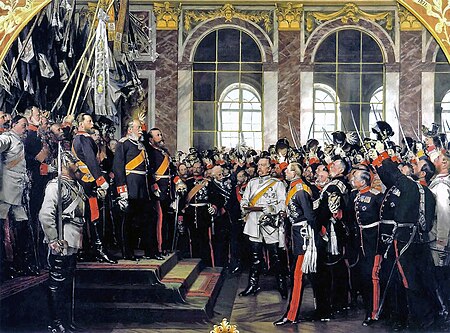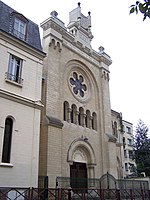Proclamation of the German Empire

The proclamation of the German Empire, also known as the Deutsche Reichsgründung, took place in January 1871 after the joint victory of the German states in the Franco-Prussian War. As a result of the November Treaties of 1870, the southern German states of Baden, Hesse-Darmstadt, with their territories south of the Main line, Württemberg and Bavaria, joined the Prussian-dominated "North German Confederation" on 1 January 1871. On the same day, the new Constitution of the German Confederation came into force, thereby significantly extending the federal German lands to the newly created German Empire. The Day of the founding of the German Empire, January 18, became a day of celebration, marking when the Prussian King William I was proclaimed German Emperor at the Palace of Versailles.
Excerpt from the Wikipedia article Proclamation of the German Empire (License: CC BY-SA 3.0, Authors, Images).Proclamation of the German Empire
Avenue de Saint-Cloud, Versailles
Geographical coordinates (GPS) Address Nearby Places Show on map
Geographical coordinates (GPS)
| Latitude | Longitude |
|---|---|
| N 48.8053 ° | E 2.135 ° |
Address
Avenue de Saint-Cloud
Avenue de Saint-Cloud
78000 Versailles, Notre-Dame
Ile-de-France, France
Open on Google Maps









